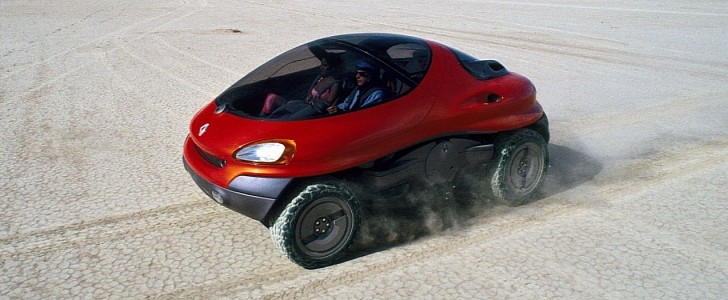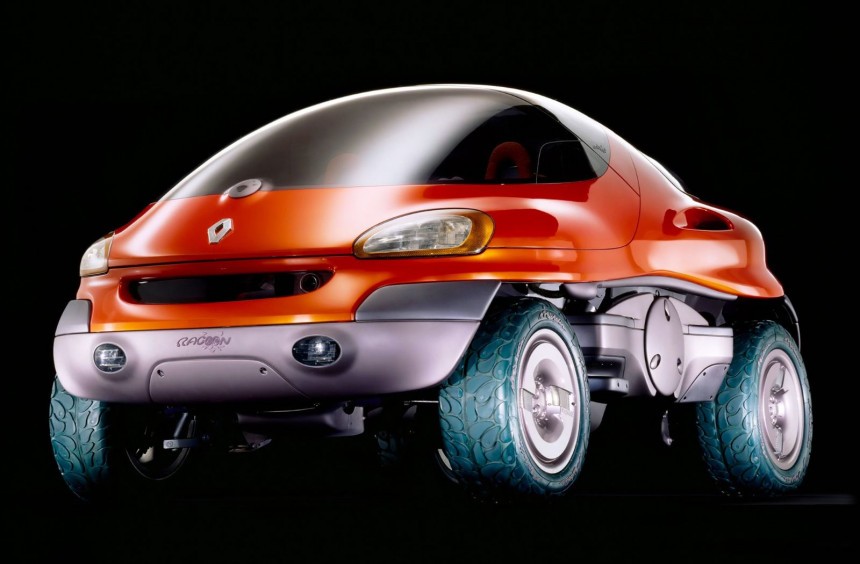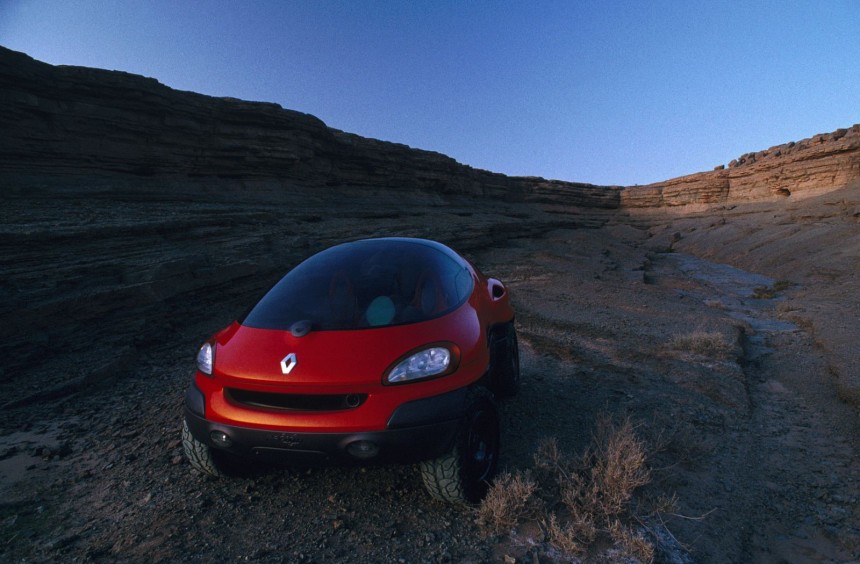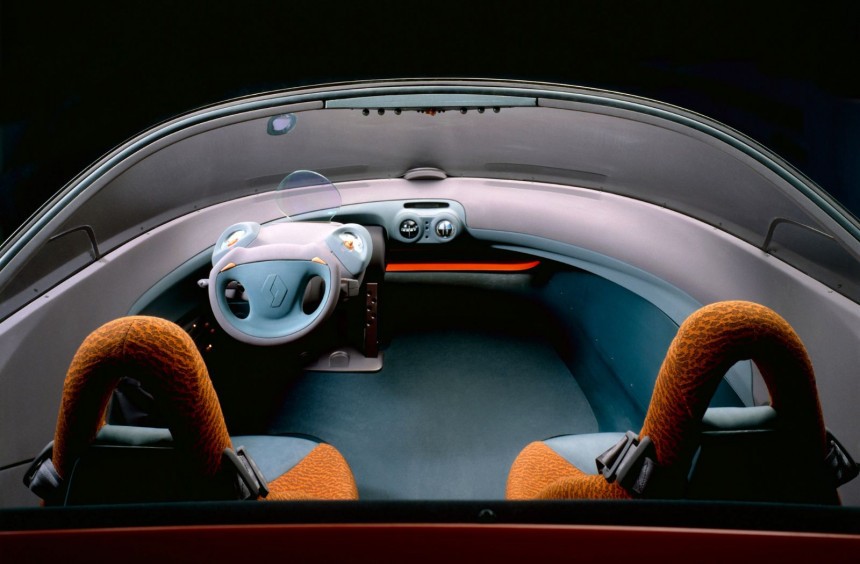Thirty years ago, the French carmaker introduced a fascinating concept that looked more like a new-age lunar rover, yet it was developed to tackle difficult terrain as well as water right here, on Earth.
Created to showcase future technologies and set new design trends, concept cars have been around since the late-1930s. According to automotive historians, the man responsible for popularizing this idea was none other than legendary General Motors stylist, Harley J. Earl. Under his supervision, Buick created the first ever concept car dubbed Y-Job in 1938 and after the Second World War ended, he helped kickstart Project Opel, which eventually gave us the first Chevy Corvette.
By the 1990s, Earl’s idea was adopted by established carmakers all over the world. While the Y-Job and most of the show cars that came shortly after it didn’t look drastically different than the mass-produced vehicles that roamed the streets, things were much different during the last decade of the 20th century.
Excluding a few, very rare and very expensive models, average cars back then looked pretty down-to-Earth in terms of design – especially when compared to the ones we see today. However, when manufacturers wanted to show off their skills and tech at the world’s most famous auto shows, they wowed the crowds with some incredibly futuristic creations.
Some of the most iconic concepts that came into being during the 1990s are the Chevrolet Corvette CERV III, Audi Avus quattro, Ford GT90, and Ford Indigo, but there was another that seems to be forgotten even though it is still mind-blowing today.
Unveiled in Geneva, Switzerland for the 1993 edition of the prestigious international auto show, the Renault concept christened Racoon actually made its public debut a year earlier in what was back then a truly unconventional way. It went down as the first concept to be introduced virtually when the French manufacturer released a short film that showcased its vision for the future. Even more groundbreaking than the vehicle itself, the video was the first to combine computer-generated (CG) graphics with real-world footage.
Created by industrial designer Patrick Le Quément and a team of talented engineers, the Racoon was meant to take the notion of an all-terrain vehicle to a whole different level. A proto-SUV that looked more like a vehicle NASA would use to explore distant planets, it was a true 4x4 with excellent off-road capabilities, but it could also leave the solid ground and navigate on water.
It was built on a high tensile steel chassis that featured an advanced, fully independent, electro-hydraulic suspension system that allowed the driver to raise the vehicle with the push of a button to improve ground clearance. Height could be modified independently for each axle, meaning that the Racoon remained level regardless of the terrain’s slope.
Power came from a twin-turbocharged, 3.0-liter version of the Peugeot-Renault-Volvo, all-aluminum V6, which was found in naturally-aspirated form under the hood of the North American market Eagle Premier and its Dodge Monaco twin. The powerplant was mated to a manual transmission with six fully-synchronized gears that sent power to all four wheels through a permanent 4WD system with three transfer cases.
According to the company, the six-cylinder could make 262 hp at 5,500 rpm, and up to 268 lb-ft (363 Nm) of torque at 2,500 rpm. That translated into a maximum speed of 96 mph (155 kph) on land and about 5 knots on water thanks to the two engine-driven hydro jets. Yes, this meant that it was slower at sea than the 1960s Amphicar, which could achieve 7 knots, but pure performance was never the key focus.
Instead, Le Quément focused on a futuristic exterior design and the integration of high-tech technologies. Thus, the Racoon got its bubbly, lunar rover-looking body/hull, which boasted a huge, electrically-actuated canopy. Made from rain-diffusing glass, the whole thing could be effortlessly opened using a relatively small remote.
Inside, the Racoon could accommodate two people in the front and another one in the mid-mounted rear seat. This configuration meant that there was no center console, so the shifter and auxiliary controls were moved to the right side of the driver.
Other features that were extremely high-tech for the 1990s included cameras instead of side mirrors and a satellite navigation system. These worked in conjunction with a novel head-up display, which, in contrast to modern versions, projected images on a round piece of glass placed behind the steering wheel.
After its Geneva debut, the concept made several appearances at other motor shows, but Renault never showcased its abilities in the real world. All we have is the initial CG video that shows what the Racoon could potentially do and thanks to YouTube user bruno simon, you can watch it below.
Whether or not the real thing was the capable amphibious vehicle that Renault advertised remains a mystery, yet it’s clear that the amphibious Racoon was one of the most fascinating concepts of the 1990s.
By the 1990s, Earl’s idea was adopted by established carmakers all over the world. While the Y-Job and most of the show cars that came shortly after it didn’t look drastically different than the mass-produced vehicles that roamed the streets, things were much different during the last decade of the 20th century.
Excluding a few, very rare and very expensive models, average cars back then looked pretty down-to-Earth in terms of design – especially when compared to the ones we see today. However, when manufacturers wanted to show off their skills and tech at the world’s most famous auto shows, they wowed the crowds with some incredibly futuristic creations.
Some of the most iconic concepts that came into being during the 1990s are the Chevrolet Corvette CERV III, Audi Avus quattro, Ford GT90, and Ford Indigo, but there was another that seems to be forgotten even though it is still mind-blowing today.
Created by industrial designer Patrick Le Quément and a team of talented engineers, the Racoon was meant to take the notion of an all-terrain vehicle to a whole different level. A proto-SUV that looked more like a vehicle NASA would use to explore distant planets, it was a true 4x4 with excellent off-road capabilities, but it could also leave the solid ground and navigate on water.
It was built on a high tensile steel chassis that featured an advanced, fully independent, electro-hydraulic suspension system that allowed the driver to raise the vehicle with the push of a button to improve ground clearance. Height could be modified independently for each axle, meaning that the Racoon remained level regardless of the terrain’s slope.
According to the company, the six-cylinder could make 262 hp at 5,500 rpm, and up to 268 lb-ft (363 Nm) of torque at 2,500 rpm. That translated into a maximum speed of 96 mph (155 kph) on land and about 5 knots on water thanks to the two engine-driven hydro jets. Yes, this meant that it was slower at sea than the 1960s Amphicar, which could achieve 7 knots, but pure performance was never the key focus.
Instead, Le Quément focused on a futuristic exterior design and the integration of high-tech technologies. Thus, the Racoon got its bubbly, lunar rover-looking body/hull, which boasted a huge, electrically-actuated canopy. Made from rain-diffusing glass, the whole thing could be effortlessly opened using a relatively small remote.
Other features that were extremely high-tech for the 1990s included cameras instead of side mirrors and a satellite navigation system. These worked in conjunction with a novel head-up display, which, in contrast to modern versions, projected images on a round piece of glass placed behind the steering wheel.
After its Geneva debut, the concept made several appearances at other motor shows, but Renault never showcased its abilities in the real world. All we have is the initial CG video that shows what the Racoon could potentially do and thanks to YouTube user bruno simon, you can watch it below.
Whether or not the real thing was the capable amphibious vehicle that Renault advertised remains a mystery, yet it’s clear that the amphibious Racoon was one of the most fascinating concepts of the 1990s.










